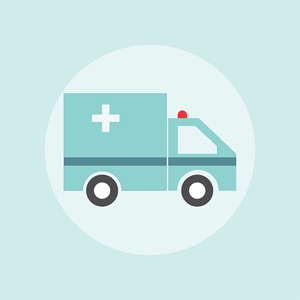CT imaging in idiopathic out-of-hospital cardiac arrest: An assessment of current practice and diagnostic utility

Accepted: 13 September 2022
All claims expressed in this article are solely those of the authors and do not necessarily represent those of their affiliated organizations, or those of the publisher, the editors and the reviewers. Any product that may be evaluated in this article or claim that may be made by its manufacturer is not guaranteed or endorsed by the publisher.
Idiopathic Out-Of-Hospital Cardiac Arrest (OHCA) requires urgent treatment. Early Computed Tomography (CT) imaging may be useful to aid diagnosis. We aimed to determine current CT imaging practice, safety, and diagnostic value in this patient population. This study was a single-centre, retrospective cohort study of patients presenting to the Emergency Department (ED) of the Royal Infirmary of Edinburgh with idiopathic non-traumatic OHCA and Return Of Spontaneous Circulation (ROSC). Between 1st January 2016 and 31st December 2019, 140 of 156 (90%) eligible patients underwent 195 CT scans identifying the cause of OHCA in 6 (4%). CT head diagnosed one ischaemic and three haemorrhagic strokes, and CT pulmonary angiogram diagnosed one acute coronary syndrome and one pulmonary embolism. CT head (134), CT pulmonary angiogram (25) and CT cervical spine (16) were the commonest scans. 68 of 195 (35%) CT scans showed important pathology, mostly secondary to OHCA. CT imaging was safe with no cases of contrast nephropathy, allergic reaction, or other complications. The diagnostic value of CT imaging in this patient population was limited. However, imaging was a valuable method of identifying other important secondary pathology.
Gräsner J-T, Lefering R, Koster RW, et al. EuReCa ONE-27 Nations, ONE Europe, ONE Registry: A prospective one month analysis of out-of-hospital cardiac arrest outcomes in 27 countries in Europe. Resuscitation 2016;105:188-95. DOI: https://doi.org/10.1016/j.resuscitation.2016.10.001
Scottish Out-of-Hospital Cardiac Arrest data linkage project: 2018/19 results. APS Group; 2020.
Gräsner J-T, Wnent J, Herlitz J, et al. Survival after out-of-hospital cardiac arrest in Europe - Results of the EuReCa TWO study. Resuscitation 2020;148:218-26. DOI: https://doi.org/10.1016/j.resuscitation.2019.12.042
Pokorna M, Necas E, Skripsky R, et al. How accurately can the aetiology of cardiac arrest be established in an out-of-hospital setting? Analysis by “Concordance in Diagnosis Crosscheck Tables”. Resuscitation 2010;82:391-7. DOI: https://doi.org/10.1016/j.resuscitation.2010.11.026
Nolan JP, Soar J, Cariou A, et al. European Resuscitation Council and European Society of Intensive Care Medicine 2015 guidelines for post-resuscitation care. Int Care Med 2015;41:2039-56. DOI: https://doi.org/10.1007/s00134-015-4051-3
Hawkes C, Booth S, Ji C, et al. Epidemiology and outcomes from out-of-hospital cardiac arrests in England. Resuscitation 2017;110:133-40. DOI: https://doi.org/10.1016/j.resuscitation.2016.10.030
Dunham GM, Perez-Girbes A, Bolster F, et al. Use of whole body CT to detect patterns of CPR-related injuries after sudden cardiac arrest. Eur Radiol 2018;28:4122-7. DOI: https://doi.org/10.1007/s00330-017-5117-0
Choi SJ, Kim HS, Kim EY, et al. Thoraco-abdominal CT examinations for evaluating cause of cardiac arrest and complications of chest compression in resuscitated patients. Emerg Radiol 2014;21:485-90. DOI: https://doi.org/10.1007/s10140-014-1218-0
Kashiwagi Y, Sasakawa T, Tampo A, et al. Computed tomography findings of complications resulting from cardiopulmonary resuscitation. Resuscitation 2015;88:86-91. DOI: https://doi.org/10.1016/j.resuscitation.2014.12.022
Viniol S, Thomas RP, König AM, et al. Early whole-body CT for treatment guidance in patients with return of spontaneous circulation after cardiac arrest. Emerg Radiol 2020;27:23-9. DOI: https://doi.org/10.1007/s10140-019-01723-x
Branch KRH, Strote J, Gunn M, et al. Early head‐to‐pelvis computed tomography in out‐of‐hospital circulatory arrest without obvious etiology. Acad Emerg Med 2021;28:394-403. DOI: https://doi.org/10.1111/acem.14228
Chelly J, Mongardon N, Dumas F, et al. Benefit of an early and systematic imaging procedure after cardiac arrest: Insights from the PROCAT (Parisian Region Out of Hospital Cardiac Arrest) registry. Resuscitation 2012;83:1444-50. DOI: https://doi.org/10.1016/j.resuscitation.2012.08.321
Naples RMD, Ellison EMD, Brady WJMD. Cranial computed tomography in the resuscitated patient with cardiac arrest. Am J Emerg Med 2009;27:63-7. DOI: https://doi.org/10.1016/j.ajem.2008.01.014
Metter RB, Rittenberger JC, Guyette FX, Callaway CW. Association between a quantitative CT scan measure of brain edema and outcome after cardiac arrest. Resuscitation 2011;82:1180-5. DOI: https://doi.org/10.1016/j.resuscitation.2011.04.001
Lederer W, Mair D, Rabl W, Baubin M. Frequency of rib and sternum fractures associated with out-of-hospital cardiopulmonary resuscitation is underestimated by conventional chest X-ray. Resuscitation 2004;60:157-62. DOI: https://doi.org/10.1016/j.resuscitation.2003.10.003
Oschatz E, Wunderbaldinger P, Sterz F, et al. Cardiopulmonary resuscitation performed by bystanders does not increase adverse effects as assessed by chest radiography. Anesthesia Analgesia 2001;93:128-33. DOI: https://doi.org/10.1097/00000539-200107000-00027
Lawes EG, Baskett PJF. Pulmonary aspiration during unsuccessful cardiopulmonary resuscitation. Intensive Care Med 1987;13:379-82. DOI: https://doi.org/10.1007/BF00257678
Franquet T, Giménez A, Rosón N, et al. Aspiration diseases: findings, pitfalls, and differential diagnosis. RadioGraphics 2000;20:673-85. DOI: https://doi.org/10.1148/radiographics.20.3.g00ma01673
Girotra S, Nallamothu BK, Chan PS. Using Risk Prediction Tools in Survivors of In-hospital Cardiac Arrest. Current Cardiol Reports 2014;16:1-8. DOI: https://doi.org/10.1007/s11886-013-0457-0
Nolan JP, Sandroni C, Böttiger BW, et al. European Resuscitation Council and European Society of Intensive Care Medicine Guidelines 2021: Post-resuscitation care. Resuscitation 2021;161:220-69. DOI: https://doi.org/10.1016/j.resuscitation.2021.02.012
Waterson F, Fleming G, Young N, et al S. Out of Hospital Cardiac Arrest Guideline 2021 V5.0. 2022.
PAGEPress has chosen to apply the Creative Commons Attribution NonCommercial 4.0 International License (CC BY-NC 4.0) to all manuscripts to be published.


 https://doi.org/10.4081/ecj.2022.10669
https://doi.org/10.4081/ecj.2022.10669







